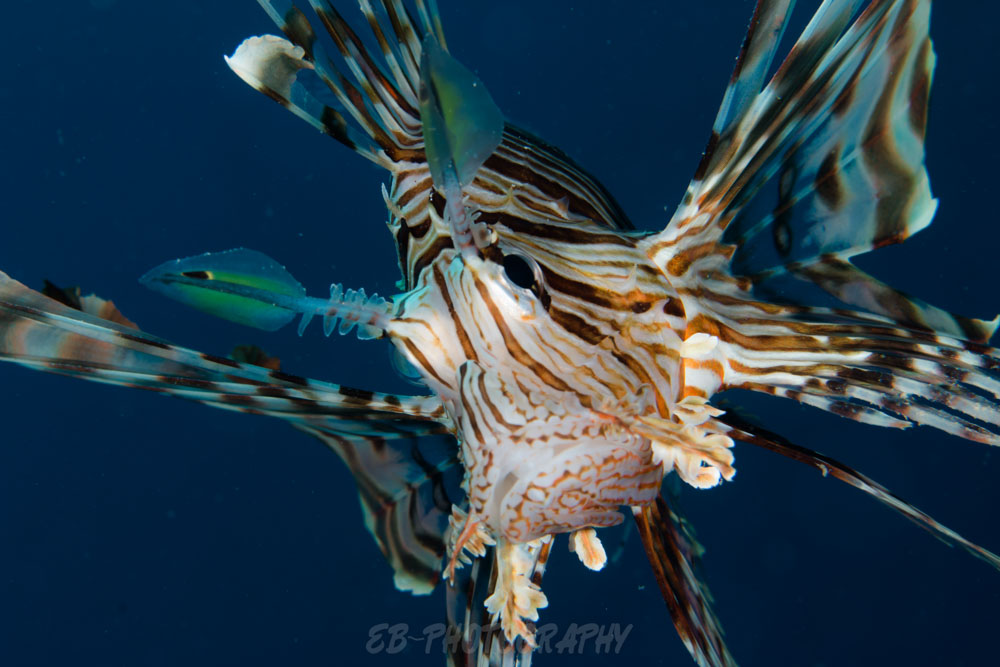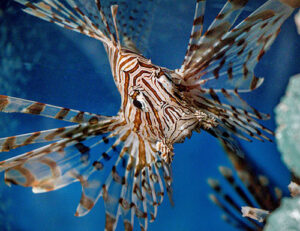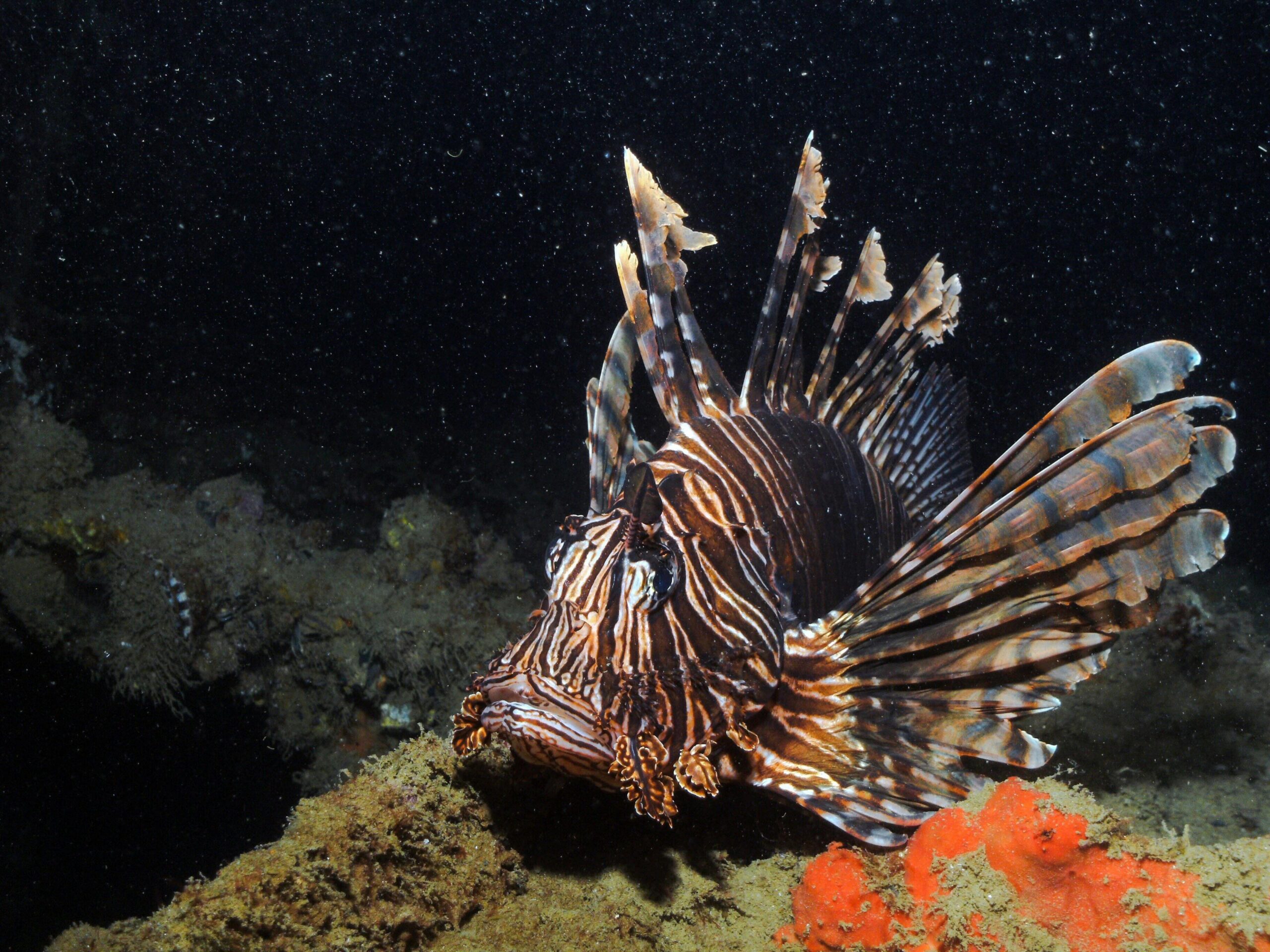Are Lion Fish Venomous?

Let us talk a bit about the lion fish, we often see during our dives. In their unique way to swim and almost float they are fascinating, but even though poisoning.

Commonly lion fish grow up to 35-40 cm in length with a dorsal fin of 13 long, strong spines and 9-11 soft rays. The anal fin has 3 long spines and 6 or 7 soft rays.
What looks so lovely is the dorsal fin which appears feathery and the pectoral fins with wing-like separate broad, smooth rays.
Their color varies from reddish to tan or grey. They also have numerous thin, dark, vertical bars on their heads and bodies.
How do the Behave?
The common lion fish is mainly nocturnal and hides in crevices during the daytime. It feeds on fish and small crustaceans. It has only a few predators, most probably because of its venomous spines, but larger lionfish do eat smaller ones. Some moray eels have shown resistance to the spines and it was reported that lion fish are included in their diet. The blue-spotted stingray has been shown to feed on it, also do some species of groupers and reef sharks.
Where do they live?

Lion fish are native to the Indian Ocean, from the Red Sea to South Africa and to Indonesia. Recorded first in 1991 in the Mediterranean Sea off Israel, following entry via Suez Canal, the lion fish is now common in the Eastern Basin, with recent observations in the channel of Sicily. Its presence at the East Coast of the United States and in the Caribbean Sea is regarded as an invasive species.
Lion fish can usually be found in areas with crevices or lagoons, often on the outer slopes of coral reefs.
Are lion fish venomous?
The fin spines are highly venomous and have caused death to humans in some rare reported cases. Nevertheless, a sting can cause extreme pain, vomiting, convulsion, minor paralysis, and breathing difficulties. Should you be stung by a lion fish, immediate emergency medical attention is strongly recommended. Some people are more sensitive to the venom than others after being stung, and symptoms and reactions from the venom vary in severity from person to person.

Let’s continue to enjoy the beautiful and colourful sea creatures. But: enjoy at a distance!
Have fun in the underwater world! We will be back soon with more information about our underwater friends!
Text: Nina Lyner, Indeep Liveaboard
Pictures: various
